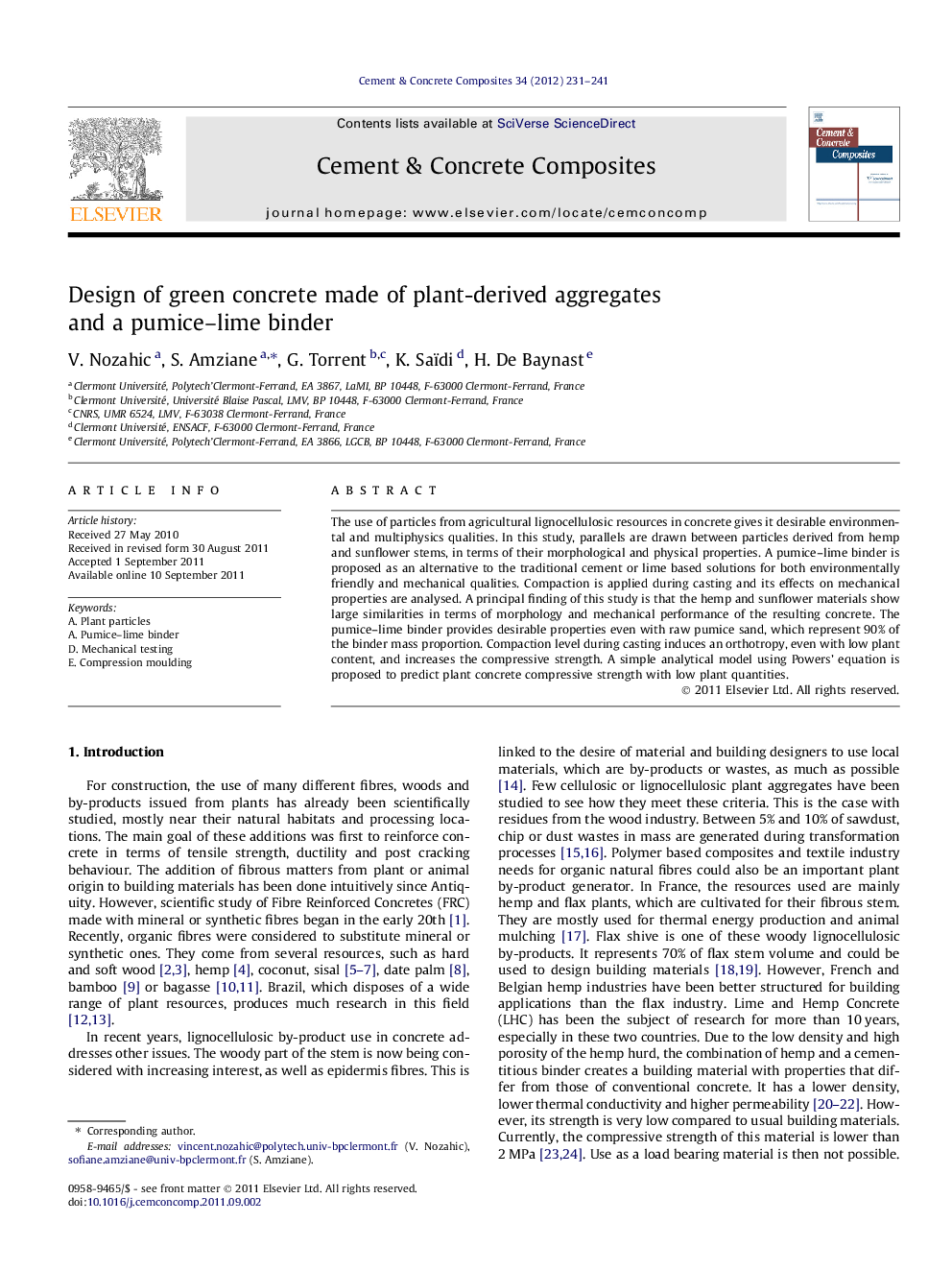| Article ID | Journal | Published Year | Pages | File Type |
|---|---|---|---|---|
| 1455117 | Cement and Concrete Composites | 2012 | 11 Pages |
The use of particles from agricultural lignocellulosic resources in concrete gives it desirable environmental and multiphysics qualities. In this study, parallels are drawn between particles derived from hemp and sunflower stems, in terms of their morphological and physical properties. A pumice–lime binder is proposed as an alternative to the traditional cement or lime based solutions for both environmentally friendly and mechanical qualities. Compaction is applied during casting and its effects on mechanical properties are analysed. A principal finding of this study is that the hemp and sunflower materials show large similarities in terms of morphology and mechanical performance of the resulting concrete. The pumice–lime binder provides desirable properties even with raw pumice sand, which represent 90% of the binder mass proportion. Compaction level during casting induces an orthotropy, even with low plant content, and increases the compressive strength. A simple analytical model using Powers’ equation is proposed to predict plant concrete compressive strength with low plant quantities.
► Concrete based on a pumice–lime binder including plant derived aggregates is designed. ► Crushed sunflowers stem can be an alternative to hemp shiv to design plant concrete. ► For low plant content, classical compacity law predicts well the compression resistance. ► Compaction process improves the mechanical properties. ► Compaction process induces orthotropic mechanical behaviour.
